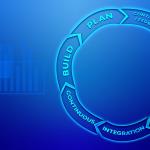The Future of Software Development: Trends to Watch in 2024
The software development landscape is undergoing rapid transformation, driven by technological advancements and evolving industry needs. As we enter 2024, several key trends are poised to shape the future of software development, offering both challenges and opportunities for businesses.
Artificial Intelligence and Machine Learning
Artificial Intelligence (AI) and Machine Learning (ML) continue to be at the forefront of innovation in software development. AI-driven tools are revolutionizing how software is developed, tested, and maintained. Predictive analytics, natural language processing, and machine learning algorithms are being integrated into applications to enhance functionality and user experience. AI can automate repetitive tasks, analyze large datasets for actionable insights, and even assist in code generation, significantly speeding up the development process.
Low-Code and No-Code Platforms
Low-code and no-code development platforms are democratizing software creation by allowing individuals with minimal coding experience to build and deploy applications. These platforms use visual development environments and pre-built components, enabling faster development cycles and reduced costs. Businesses can rapidly prototype and iterate on ideas, and departmental teams can create tailored solutions without relying heavily on IT departments. However, it's crucial to assess the trade-offs in terms of customization and scalability when using these platforms.
Cybersecurity Focus
As cyber threats become more sophisticated, cybersecurity is increasingly critical. The rise in data breaches and cyber-attacks underscores the need for robust security measures in software development. Developers are incorporating advanced security protocols, encryption, and real-time threat detection systems to safeguard applications and data. Additionally, compliance with regulations like GDPR and CCPA is becoming mandatory, driving the need for secure coding practices and regular security audits.
Quantum Computing
Quantum computing is an emerging technology with the potential to revolutionize various industries, including software development. Unlike classical computers that use bits, quantum computers utilize qubits, allowing them to process complex problems at unprecedented speeds. Although still in its early stages, quantum computing could significantly impact fields such as cryptography, optimization, and data analysis. Businesses should start exploring quantum computing's potential applications and preparing for future disruptions.
Edge Computing
Edge computing is gaining traction as it addresses the limitations of traditional cloud computing. By processing data closer to the source—such as IoT devices—edge computing reduces latency, enhances performance, and supports real-time data processing. This is particularly important for applications requiring immediate feedback, such as autonomous vehicles and industrial automation. As edge computing technology matures, its integration with cloud services will likely become more seamless, offering a hybrid approach to data management.
DevOps and Continuous Integration/Continuous Deployment (CI/CD)
The DevOps approach, which emphasizes collaboration between development and operations teams, continues to gain prominence. CI/CD pipelines automate the software delivery process, enabling frequent, reliable updates and reducing the time to market. This methodology fosters a culture of continuous improvement, allowing teams to respond quickly to user feedback and market changes. Integrating CI/CD practices can lead to more efficient development cycles and higher-quality software.
Sustainability and Green Computing
Sustainability is becoming a crucial consideration in software development. Green computing practices aim to reduce the environmental impact of technology by optimizing resource use, minimizing waste, and promoting energy-efficient solutions. Developers are focusing on creating software that not only meets performance and functionality requirements but also aligns with environmental goals. This trend reflects a broader industry shift towards sustainable technology practices.
Conclusion
As we navigate the complexities of 2024 and beyond, staying informed about these trends is essential for software developers and businesses. Embracing AI and ML, leveraging low-code platforms, prioritizing cybersecurity, exploring quantum computing, adopting edge computing, and integrating DevOps and sustainability practices will be key to maintaining a competitive edge and driving innovation in the software development field.







